yes indeed! i would add a tweeter though for the highest Hz's....
speaking of line array, i'm VERY curious to see what a bunch of fr58ex can do. At low volume, they have many strengths, among them is lightning fast bass and small detail retrieval. You have to strap them well though because they tend to vibrate
unfortunately, the fr58ex has a dropping response starting at 7kHz and higher up, which is only going to get worse with the combing of line arrays.
That's why the rising response of the SBA is better suited for line arrays.
what about adding a tweeter then...? have you heard the fr58ex in person? it really has a «unique» sound (like others have their as well)...for it's price at least IMO....
anyway...i don't want to hijack XRk's thread...
anyway...i don't want to hijack XRk's thread...

Last edited:
what about adding a tweeter then...? have you heard the fr58ex in person? it really has a «unique» sound (like others have their as well)...for it's price at least IMO....
anyway...i don't want to hijack XRk's thread...
Feel free to talk about FR58EX here:
FR58EX and AC130F1 micro-FAST / WAW
anyone do the PS95 version yet- love to see some measurements. also was there a definitive version of the stand mount TL?
hi everybody.
I'm wondering .... why not making this nice speaker (FAST) X-overLESS ? Of course needs 2 stereo amplifiers + active X-over but I believe that the units (225-8 & 10f) will "breath"
I'm wondering .... why not making this nice speaker (FAST) X-overLESS ? Of course needs 2 stereo amplifiers + active X-over but I believe that the units (225-8 & 10f) will "breath"
Sure, I made the first version using active crossover and DSP early on - check the first 100 posts.
Here was a LR2 XO with miniDSP and a pair of Class D amps.
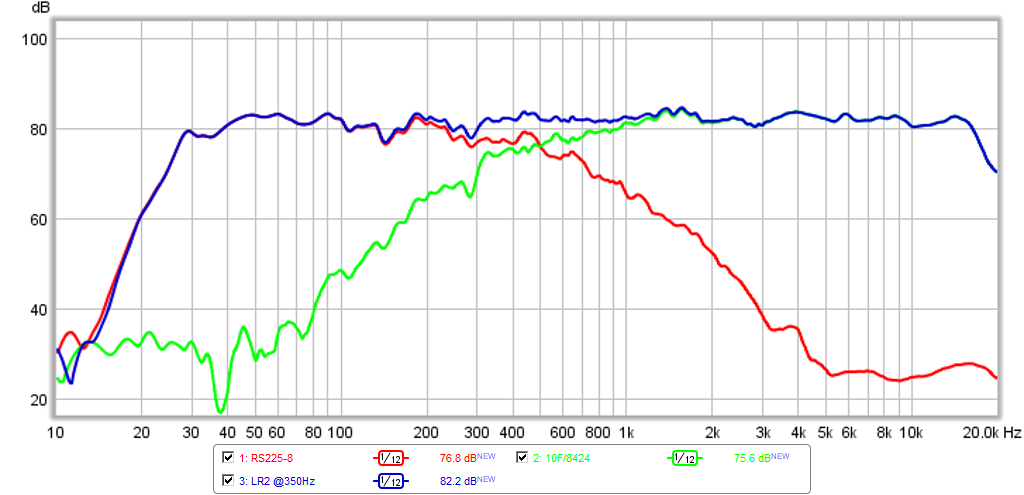
I also tried and active 1st order and also a Harsch XO. But I prefer the sound of the passive XO.
Here was a LR2 XO with miniDSP and a pair of Class D amps.

I also tried and active 1st order and also a Harsch XO. But I prefer the sound of the passive XO.
Last edited:
Yes, I have tried the PS95 here - with RS225 and also with SBA woofer post 1811:
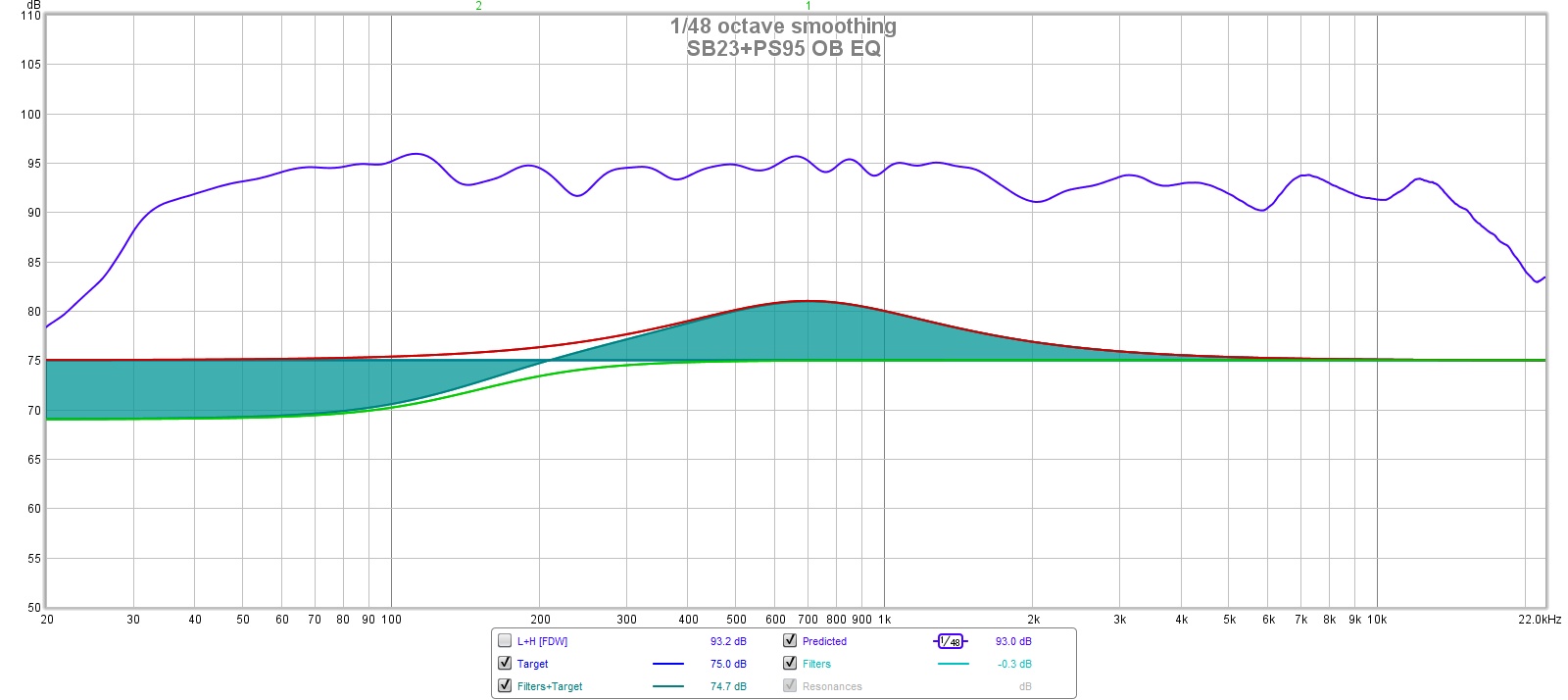
Last edited:
xrk971, perceval, pidesd,
See you guys discuss objective graphs and relate it to subjective illusions of own listening test experiense or prediction for how a graph will sound, for me you can mean/conclude/predict/argue whatever how a real world listening test illusion will fall out 🙂 no problem that said verse some other members you all seems to be some objective minded as base to build your acoustic signature. Therefor to improve on that base suggest take the learning curve/study few times to get into how free VituixCad works, well at its site there is guides in pdf format called "VituixCAD Measurement Preparations"/"VituixCAD_Measurement_Preparations_REW" and a normal "Manual". Suggest above because if you objective minded its hopeless predict or conclude what you will hear but better be guided a bit by graphs as below if a transducer is within ones preference signature or mess of preference signatures 😀, of course any transducer measured outdoor in steps of +/-10deg half or fullspace with a dual channel soundcard to secure perfect phase timing using second channel as loopback reference is optimal but less can work, take for example below figures which is manufacture standard datasheets curves and all the work you see including get graphs traced is done within VituixCAD and they give a much better hint of real world than illusion of our ears can tell unlesh say we have special training in acoustic listening test and even better if they setup to be blind.
Have printed out four mid-tweeter examples below and if you want to see how the new SBA SB10PGC21-4 and SB65WBAC25-4 relate to below you can do it yourself and be prepared they actual really good based on datasheet, that on axis is of course scary but then step hor of axis as VituixCAD can model in value of same step angle as the feeded measurement present and then these small diameter SBA transducers begin looks great.
Lets start with PS95:
CEA/CTA2034 also called Spinorama charts is a new standard to help consumers a standard base, its pdf can be downloaded free by registering at cta.tech site and another good pdf is try google "Interpreting-Spinorama-Charts_Small.pdf" is out on the neat net. Red graph below DI is green Listening window divided dark blue Power response and DI of course show how beaming is weigted on a standartized compareable scale but also shall DI be as smooth as possible else with big swings we see interference nulls as for PS95 where it swings below zero dB point line (right vertical scale dB scale is for the two DI curves and left side vertical dB scale is for the other response curves) at around 1,2 and 2,4kHz, it could be the phase plug they use that make the havoc or the hole/bump from using a underhug surround there but forgive me its nothing that a dirty quick guess.
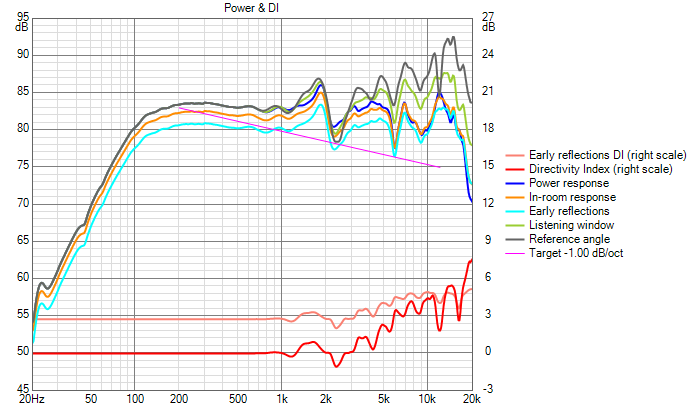
PS95 polar map and line chart:
We got to admit any transducer with polar set to normalized is signature sum of the transducer itself in that physical/acoustic situation it is setup and measured, and we can sceam all that we want EQ on axis or any axis flat as a pancake but any electrical manipulation cant improve that signature only the axis we manipulate will change to the flat target. In line chart we see same as polar but each of the 4 times 15deg steps from datasheet is presented and second chart is normalized, times of steps used kind of represent resolution or precision, for high end builds sweep it say -90 to +90 in steps of 10deg or go fullspace out to+/-180deg.
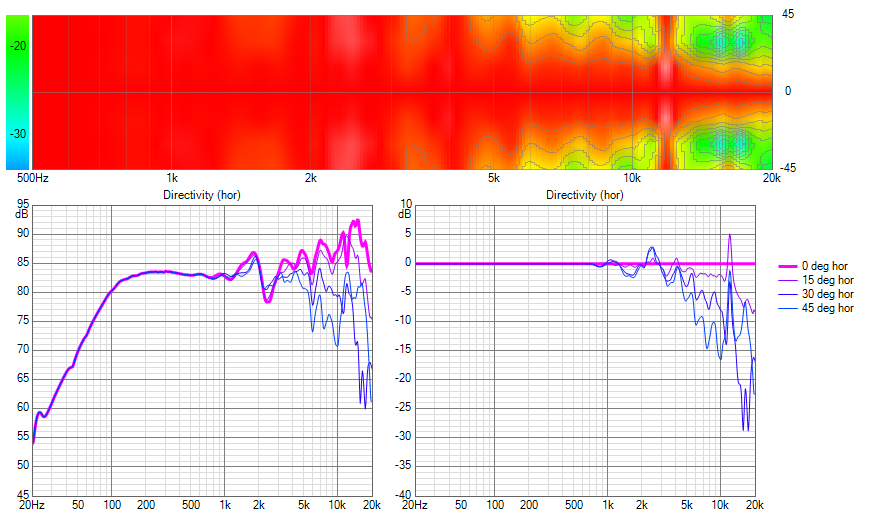
RS100-8 spinorama:
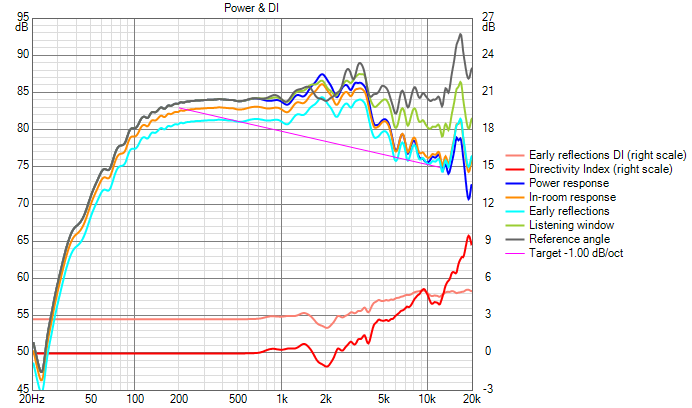
RS100-8 polar and line chart:
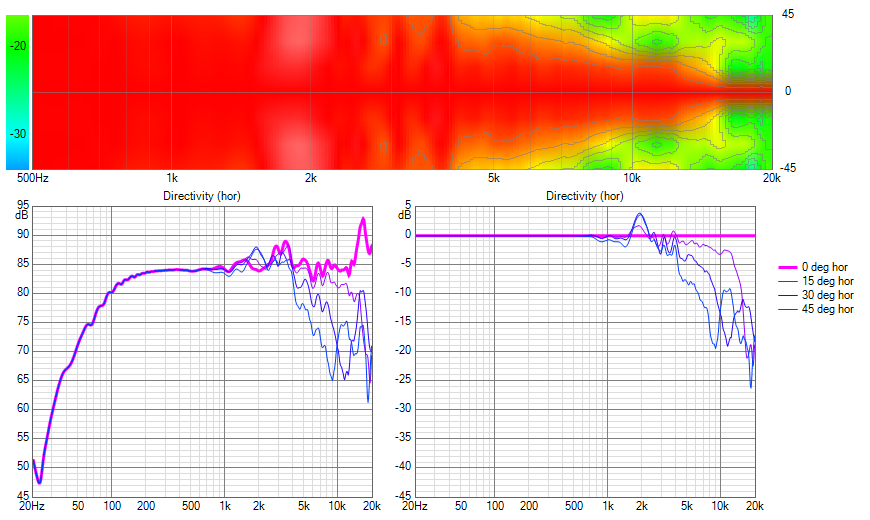
TC9FD18-08 spinorama:
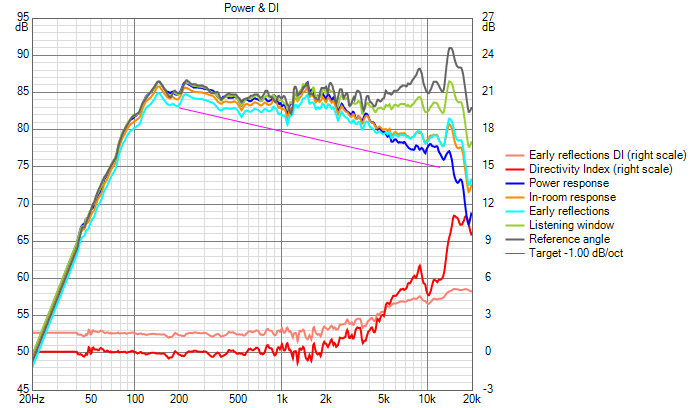
TC9FD18-08 polar and line chart:
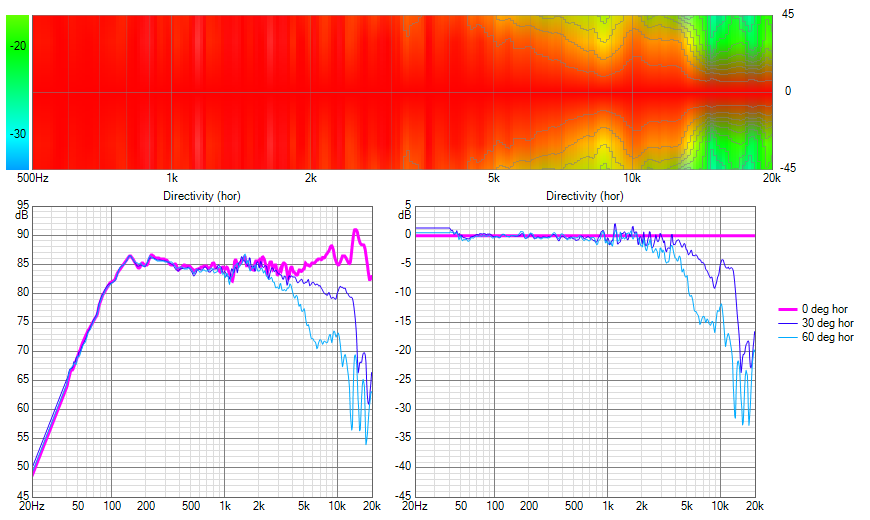
10F/8424G00 spinorama:
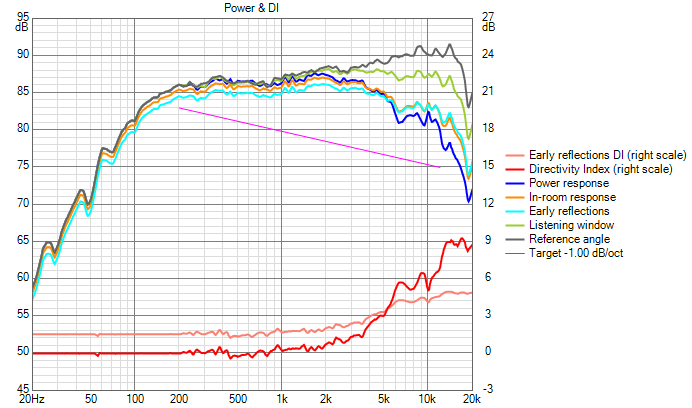
10F/8424G00 polar and line chart:
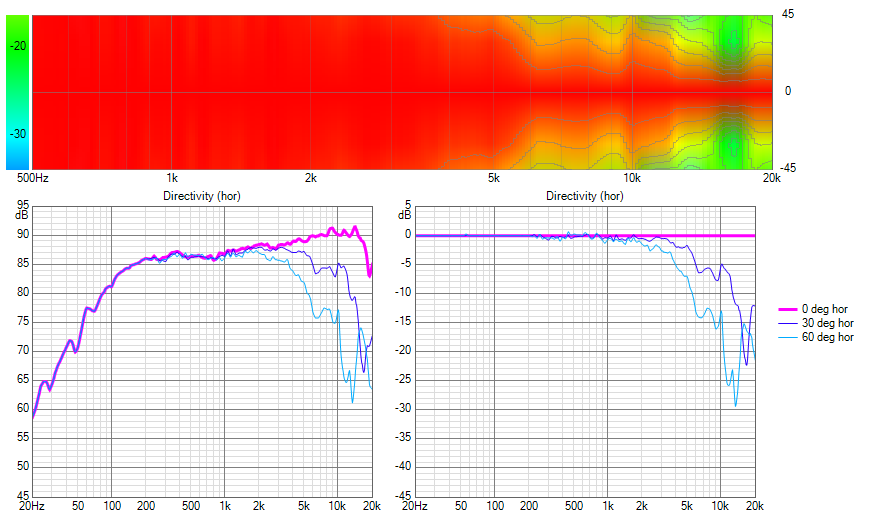
Hope you can see the point get some help to acoustics from neat modern program and a bit of computerpower.
Oh and a normalized polar signature for a Nautaloss enclosure using PRV5mr450, measured indoor by xrk971 in 15deg steps 0-45deg, signature or say signatures 😀 above 4kHz is a fantastic visual happening, rotate visual 90 deg to left side and its close to look the start on a power failure for a rocket launc.

See you guys discuss objective graphs and relate it to subjective illusions of own listening test experiense or prediction for how a graph will sound, for me you can mean/conclude/predict/argue whatever how a real world listening test illusion will fall out 🙂 no problem that said verse some other members you all seems to be some objective minded as base to build your acoustic signature. Therefor to improve on that base suggest take the learning curve/study few times to get into how free VituixCad works, well at its site there is guides in pdf format called "VituixCAD Measurement Preparations"/"VituixCAD_Measurement_Preparations_REW" and a normal "Manual". Suggest above because if you objective minded its hopeless predict or conclude what you will hear but better be guided a bit by graphs as below if a transducer is within ones preference signature or mess of preference signatures 😀, of course any transducer measured outdoor in steps of +/-10deg half or fullspace with a dual channel soundcard to secure perfect phase timing using second channel as loopback reference is optimal but less can work, take for example below figures which is manufacture standard datasheets curves and all the work you see including get graphs traced is done within VituixCAD and they give a much better hint of real world than illusion of our ears can tell unlesh say we have special training in acoustic listening test and even better if they setup to be blind.
Have printed out four mid-tweeter examples below and if you want to see how the new SBA SB10PGC21-4 and SB65WBAC25-4 relate to below you can do it yourself and be prepared they actual really good based on datasheet, that on axis is of course scary but then step hor of axis as VituixCAD can model in value of same step angle as the feeded measurement present and then these small diameter SBA transducers begin looks great.
Lets start with PS95:
CEA/CTA2034 also called Spinorama charts is a new standard to help consumers a standard base, its pdf can be downloaded free by registering at cta.tech site and another good pdf is try google "Interpreting-Spinorama-Charts_Small.pdf" is out on the neat net. Red graph below DI is green Listening window divided dark blue Power response and DI of course show how beaming is weigted on a standartized compareable scale but also shall DI be as smooth as possible else with big swings we see interference nulls as for PS95 where it swings below zero dB point line (right vertical scale dB scale is for the two DI curves and left side vertical dB scale is for the other response curves) at around 1,2 and 2,4kHz, it could be the phase plug they use that make the havoc or the hole/bump from using a underhug surround there but forgive me its nothing that a dirty quick guess.
PS95 polar map and line chart:
We got to admit any transducer with polar set to normalized is signature sum of the transducer itself in that physical/acoustic situation it is setup and measured, and we can sceam all that we want EQ on axis or any axis flat as a pancake but any electrical manipulation cant improve that signature only the axis we manipulate will change to the flat target. In line chart we see same as polar but each of the 4 times 15deg steps from datasheet is presented and second chart is normalized, times of steps used kind of represent resolution or precision, for high end builds sweep it say -90 to +90 in steps of 10deg or go fullspace out to+/-180deg.
RS100-8 spinorama:
RS100-8 polar and line chart:
TC9FD18-08 spinorama:
TC9FD18-08 polar and line chart:
10F/8424G00 spinorama:
10F/8424G00 polar and line chart:
Hope you can see the point get some help to acoustics from neat modern program and a bit of computerpower.
Oh and a normalized polar signature for a Nautaloss enclosure using PRV5mr450, measured indoor by xrk971 in 15deg steps 0-45deg, signature or say signatures 😀 above 4kHz is a fantastic visual happening, rotate visual 90 deg to left side and its close to look the start on a power failure for a rocket launc.
Attachments
-
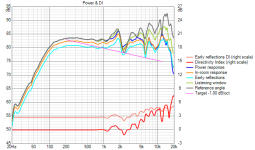 1_PS95_1.png47.8 KB · Views: 762
1_PS95_1.png47.8 KB · Views: 762 -
 1_PS95_2.png93.4 KB · Views: 748
1_PS95_2.png93.4 KB · Views: 748 -
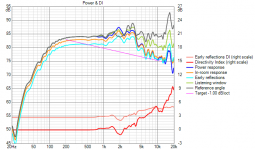 1_RS100-8_1.png48 KB · Views: 750
1_RS100-8_1.png48 KB · Views: 750 -
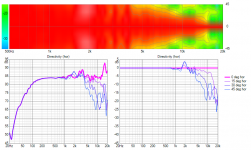 1_RS100-8_2.png96.7 KB · Views: 749
1_RS100-8_2.png96.7 KB · Views: 749 -
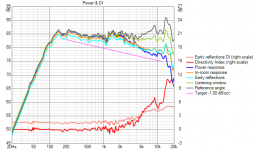 1_TC9_1.png53.7 KB · Views: 760
1_TC9_1.png53.7 KB · Views: 760 -
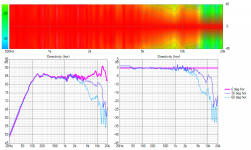 1_TC9_2.png88.1 KB · Views: 756
1_TC9_2.png88.1 KB · Views: 756 -
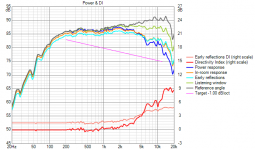 1_10F_8424_1.png46.5 KB · Views: 1,742
1_10F_8424_1.png46.5 KB · Views: 1,742 -
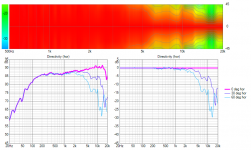 1_10F_8424_2.png75.1 KB · Views: 751
1_10F_8424_2.png75.1 KB · Views: 751 -
 1_PRV_5mr450_2.png110.9 KB · Views: 750
1_PRV_5mr450_2.png110.9 KB · Views: 750
Last edited:
Byrtt, always on top of things.
From the graphs, the tc9 and 10f really look like well-behaved drivers.
From the graphs, the tc9 and 10f really look like well-behaved drivers.
Thanks perceval try share what looks help us more than one bit forward if science and objective data is accepted tools and agree they well behaved drivers and also have double checked long ago they very close to what a theoretical 68mm piston will present in simulation so their designers shall have a thump up doing their best but those small diameter SBA transducers is also looking fine offset from on axis, by the way theoretical pistons can also be produced into few dialogs of VituixCAD though admit my own reference ones are produced from a Excell ark share by a member somewhere inside this site, now suggest before you put your savings into transducers well lets say the ones that shall cover above 1kHz where stuff gets directional that you fill their datasheet polars or 3rd party ones into VituixCAD so you know what to expect from them, directionality is seldom any problem for any high pass slopes and is mostly perfect halfspace or fullspace at least here in full range forum but directionality of all the low passed bands are very important they can hold up directionality in slopes to same as the high passed ones if you go for say high end or better integration : )
Last edited:
byrtt,
first of all, i think you could use punctuation in your dissertations, because one day you will lose consciousness for excess of co2 in your body

I'll be back when i finish reading 🙂
first of all, i think you could use punctuation in your dissertations, because one day you will lose consciousness for excess of co2 in your body


I'll be back when i finish reading 🙂
Last edited:
Thanks for showing us the power of Vituix CAD. It looks like the RS100-8 is a driver that deserves a little more respect given the rather well behaved polars and nice price relative to the venerable 10F.
After many hours of listening with the new Miflex caps, I have to say that I agree with Maty that they do make a difference. It is subtle but the improvement in soundstage and vocal presence is unmistakable. Definitely a worthwhile upgrade/add-on.
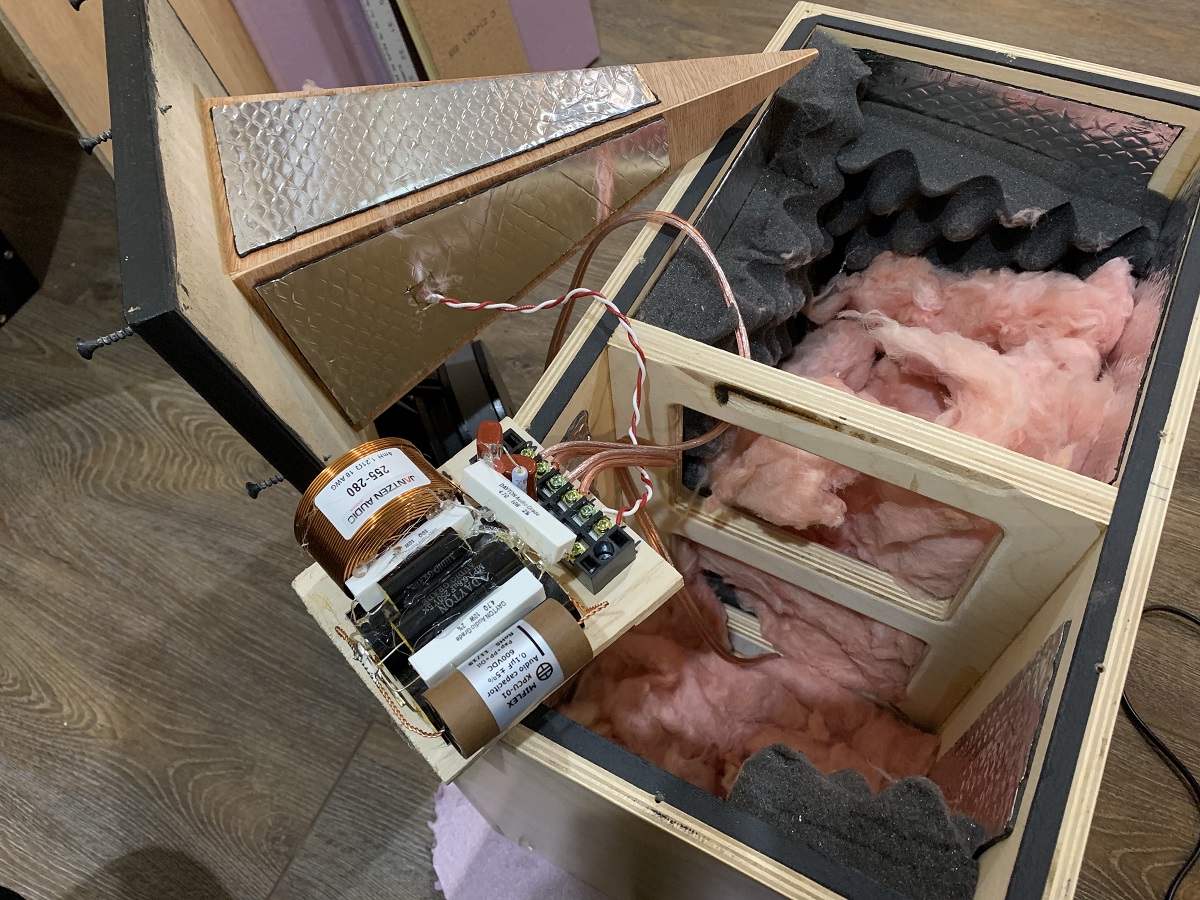
Another very worthwhile upgrade is to throw out all silicon diode based rectifier bridges in your PSU and change to LT4320 active bridges. For Class A, it makes a big difference in that no heat is generated, but the big difference is the deeper dark background and improvment in clarity - the switch noise (RF oscillations) from diodes switching on and off at 0.6v is eliminated since the active bridge MOSFETs (serving as phase-controlled diodes with no voltage drop) to switch over at precisly the 0 crossing point - thus diode switch noise eliminated. You can see the active bridges on the end of the amp boards next to the CRCRCRC caps:
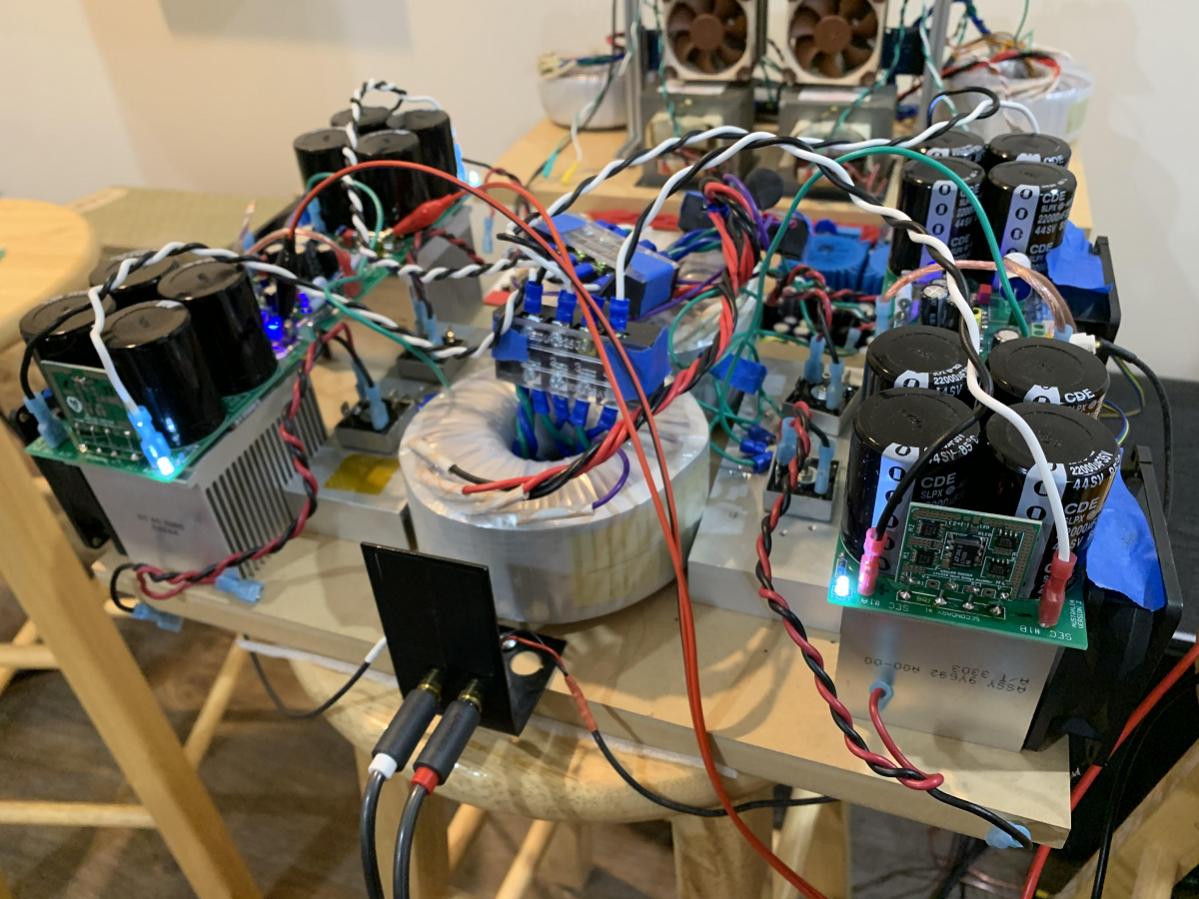
But if your amp uses an SLB PSU already, this active bridge feature is built in.
Another very worthwhile upgrade is to throw out all silicon diode based rectifier bridges in your PSU and change to LT4320 active bridges. For Class A, it makes a big difference in that no heat is generated, but the big difference is the deeper dark background and improvment in clarity - the switch noise (RF oscillations) from diodes switching on and off at 0.6v is eliminated since the active bridge MOSFETs (serving as phase-controlled diodes with no voltage drop) to switch over at precisly the 0 crossing point - thus diode switch noise eliminated. You can see the active bridges on the end of the amp boards next to the CRCRCRC caps:
But if your amp uses an SLB PSU already, this active bridge feature is built in.
In my case of subtle has little, the difference was and is amazing with some recordings. We hallucinate with Hotel California (Eagles). Right now I have the same feeling with this incredible recording and interpretation, for high quality streaming, free and without advertising:
Luis Grané - Albéniz - Iberia (2014), PlayClassics Streaming 2020
Now Playing + What are you listening to?
Streaming - PlayClassics

Luis Grané - Albéniz - Iberia (2014), PlayClassics Streaming 2020
Now Playing + What are you listening to?
Streaming - PlayClassics
BYRRT, does Virtuix CAD do baffle and simple waveguide simulation?
I bet we can improve the results of these drivers with a few tweaks...
I bet we can improve the results of these drivers with a few tweaks...
Sounds interesting thanks if we can fix normalized polar closer to perfect with physical means, check for baffle simulation but without really knowing feel waveguide and horns are more supported with good politics in Kimmo's guides how to optimal measure them, but then there are member mabat's neat acoustic horn design program well think you hinted me there in past and also Hornresp. Only problem i see is how much does it cost on center to center distance to mid woofer because a personal experience is within 1/8 wavelenght sloped >8th order FIR they vitual blend as one point and personal feel that feature will be hard to give up.BYRRT, does Virtuix CAD do baffle and simple waveguide simulation?
I bet we can improve the results of these drivers with a few tweaks...
I mentioned it because even my shallow back mounted baffle was inspired by seeing improved off axis measurements in a 2-way by doing this. That sealed the deal for my baffle layout. Sadly those measurements have been lost without me saving them.
We're talking about a little tweak here to help out the top end become that much more consistent.
We're talking about a little tweak here to help out the top end become that much more consistent.
Oh that sounds lovely idea in backmounted more or less cost nearly nothing on ctc distance, when i find time will have a look at mabat's thread where real many seems more than impressed.
If backside mounting a 3.5in driver on a 3/4in round over with a router improves off axis, more people should do it. I do know that my WG300 waveguide with a tweeter and a 6.5in woofer has terrific polars. But that’s an 8in wide waveguide.
These are rough eyeball angle estimates (+/-3deg probably).
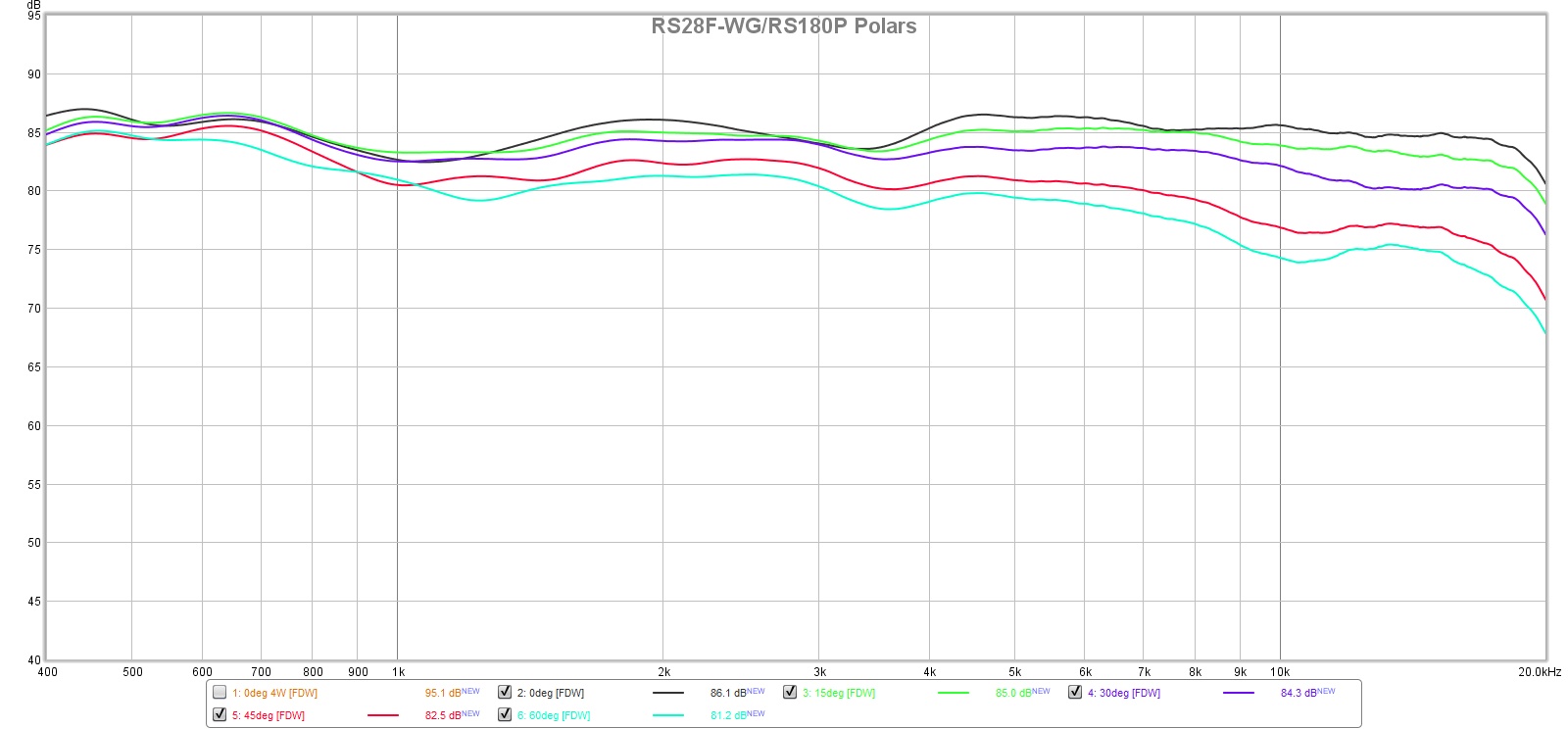
These are rough eyeball angle estimates (+/-3deg probably).
- Home
- Loudspeakers
- Full Range
- 10F/8424 & RS225-8 FAST / WAW Ref Monitor